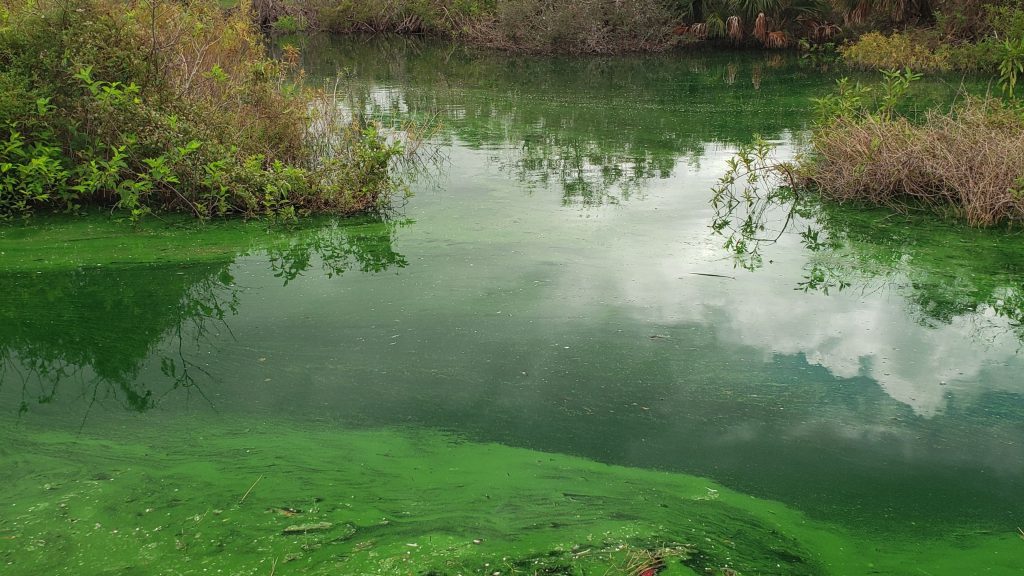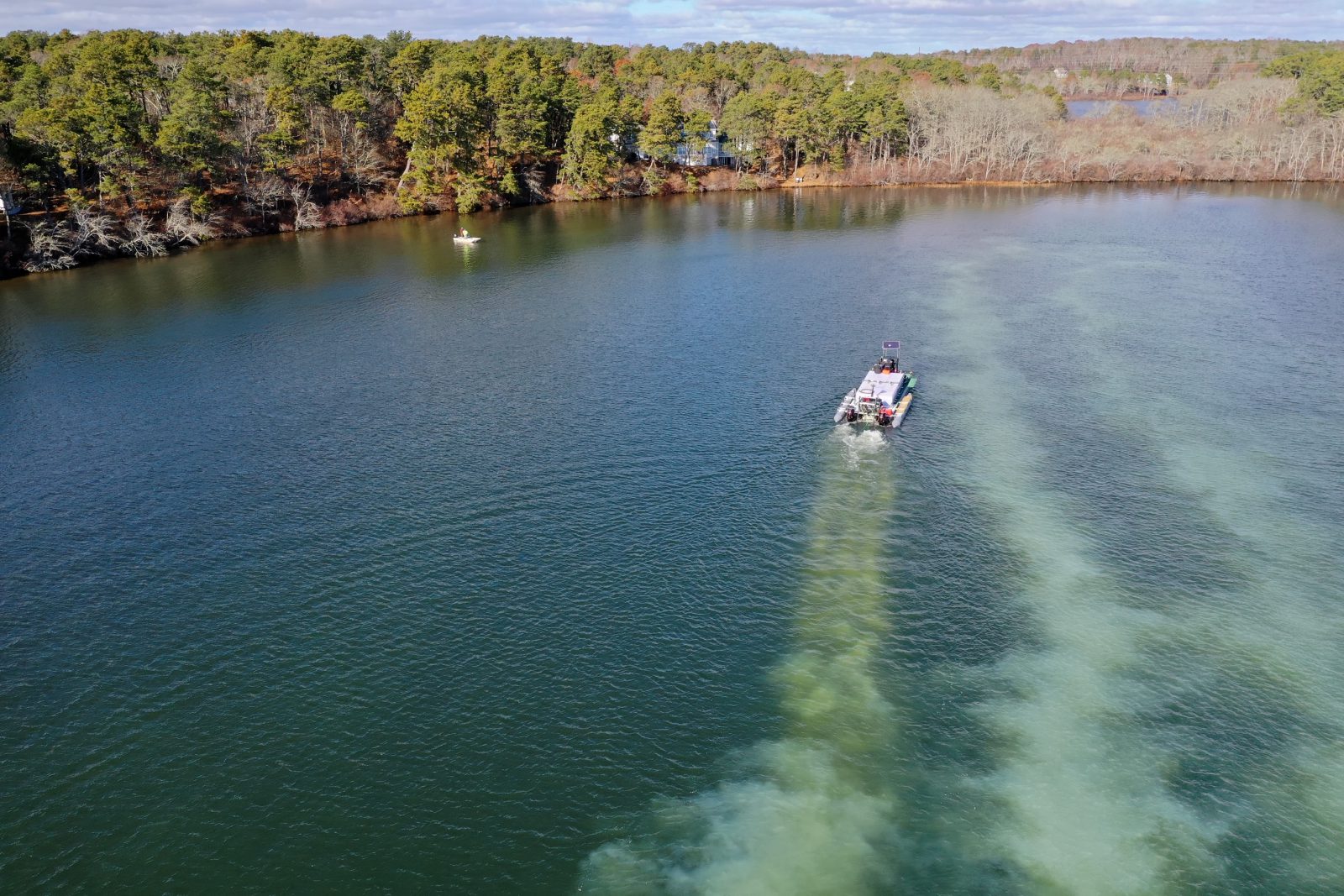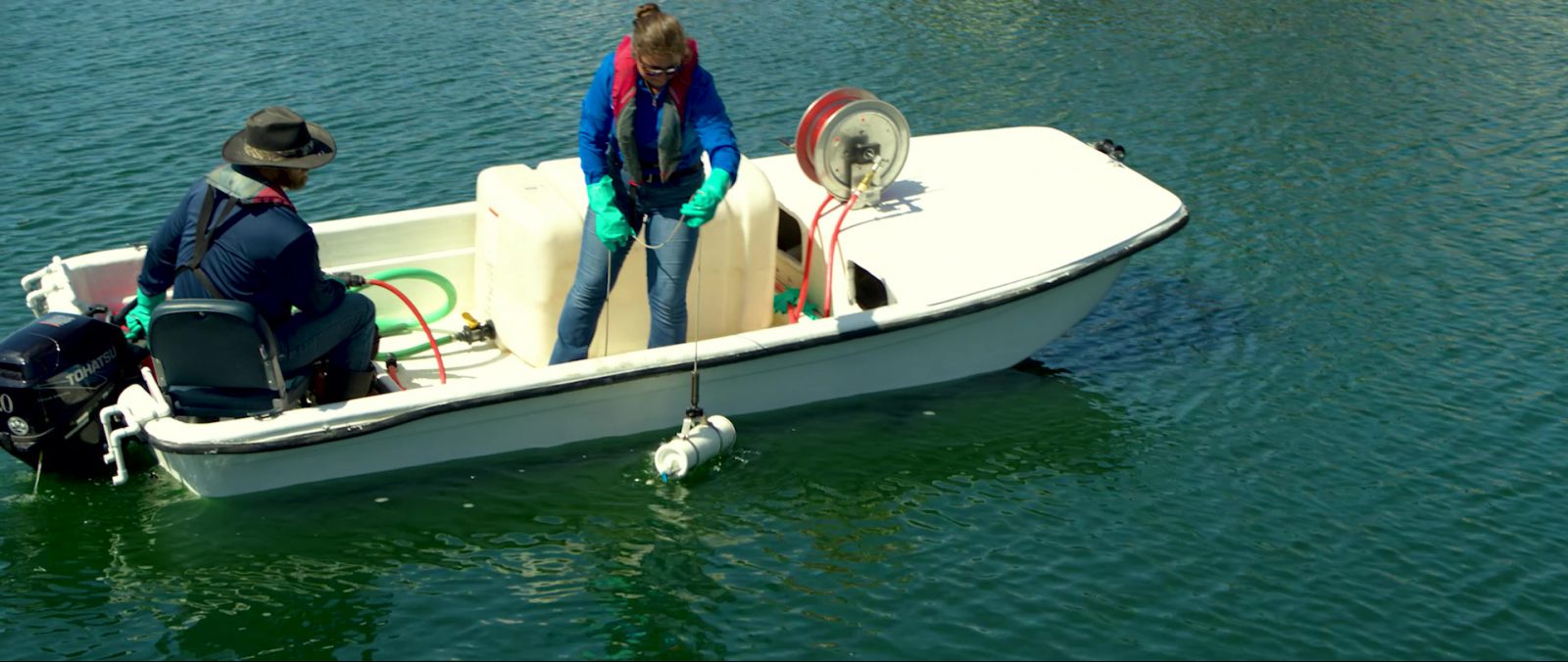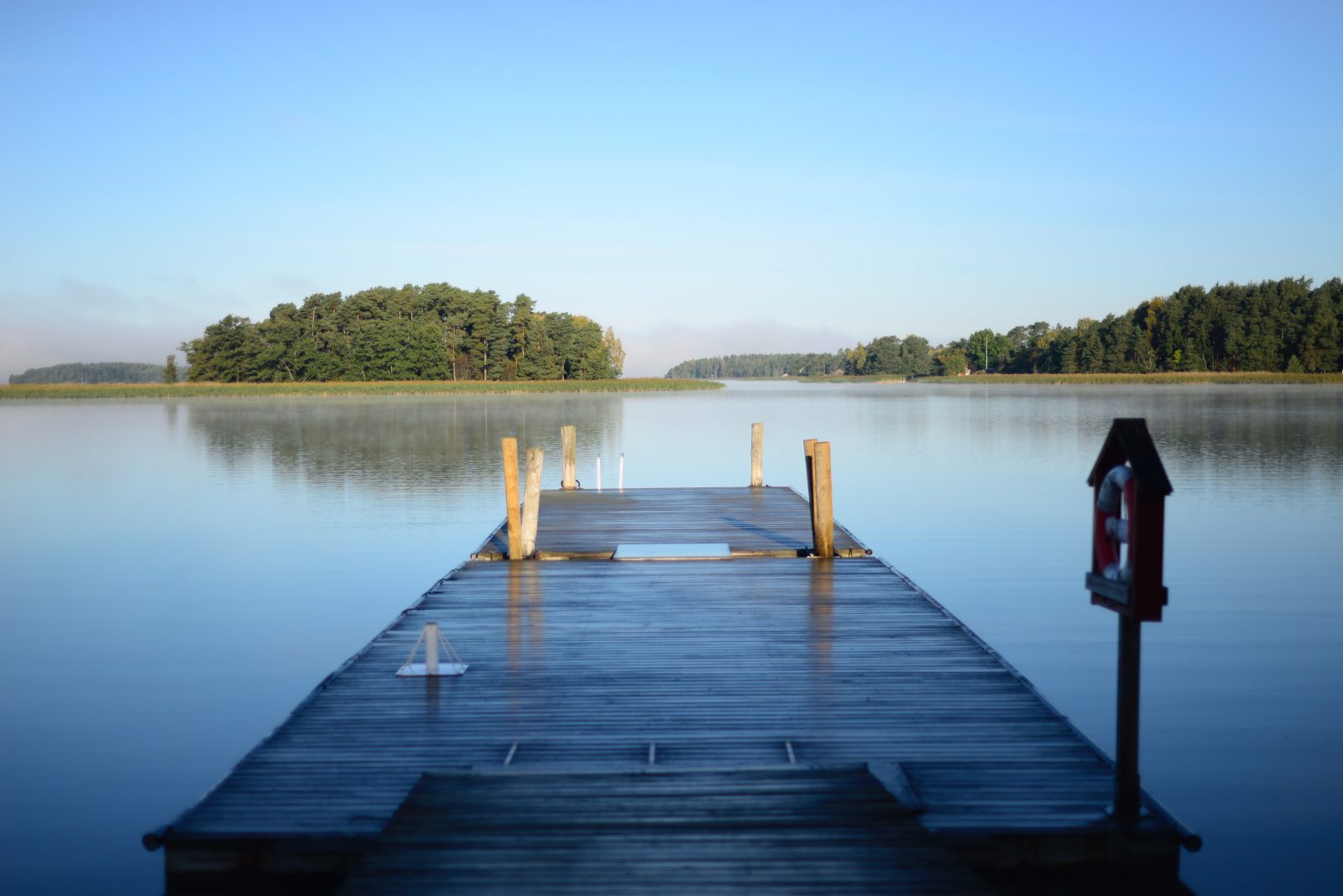
Revitalize Your Fishery: Reducing Phosphorus
It’s a bad day when your fishing hole turns into a green soupy mess and worse if your trophy bass float belly up. Standing by as your slice of paradise seemingly self-destructs is an unfortunate reality for people every year. The tranquility once found while relaxing by the water gradually slipped away over the years as nutrients accumulated in an aging waterbody.
Although this aging process typically conflicts with goals, it is natural and should be expected. Phosphorus and oxygen are two key factors that influence a lake’s health and appearance. Improving oxygen levels is a widely adopted management strategy and, overall, it works well to keep up with a lake’s gradually increasing oxygen demand. As lakes age, traditional aeration systems eventually struggle to keep up with overwhelming oxygen demand.
The Results of Excess Phosphorus
The accumulation of phosphorus is a large contributor to the aging process. An increase in phosphorus promotes the growth of algae and vegetation and eventually results in increased oxygen demand. As this productivity cycle ramps up, the oxygen supply is sometimes unable to keep up. It starts in deeper water, where oxygen decreases to zero, and spurs the release of phosphorus from the lake’s sediment layer. This leads to higher phosphorus levels, fueling the negative cycle further. Year after year, this cycle continues, compounding itself until the entire food web that once existed in harmony now struggles to maintain a healthy state.
Lakes that exhibit signs of excessive vegetation and algae growth are typically eutrophic (25-96 ppb total phosphorus) (parts per billion) or hypereutrophic (>96 ppb total phosphorus). In my experience, most Largemouth bass fisheries do well in the lower half of this eutrophic range. As lakes increase into the upper half, this is typically when algae biomass starts to noticeably increase and bloom management becomes challenging. As waterbodies break into the hypereutrophic range, the biomass of aquatic growth is oftentimes putting significant stress on the ecosystem.
Restoring A Fishing Club with Excess Phosphorus Levels
A fishing club in Virginia, rich in history, has an aging 28-acre lake. In the past decade, club members have witnessed it deteriorate. In reality, the lake has been aging for decades and just recently hit a tipping point that fueled excessive blue-green algae growth. The lake was caught in a negative cycle where elevated phosphorus fueled growth and strained oxygen levels. This problem continuously compounded itself, resulting in a pea-soup green lake that only had 12-18 inches of visibility throughout the growing season.
One solution that can be used to control algae is an EPA-registered algaecide. This is considered a short-term solution because the excessive algae growth is a symptom of the high phosphorus load. A better solution would be to reduce the phosphorus and achieve a more long-term, cost-effective result.
After several years of conversation and consideration, the fishing club approved a long-term plan to mitigate phosphorus. Surface water samples from the fall of 2017 and 2019 showed similar results, with total phosphorus at 71.2 and 60.0 ppb. Additionally, the lake’s sediment had 154 mg of available phosphorus per kg of dry sediment. Based on the phosphorus data as well as the other water quality parameters such as alkalinity and pH, a treatment rate of 6 ppm (parts per million) of liquid alum was applied in the spring of 2020.
Three months post-treatment, the total phosphorus levels were down to 36 ppb. The lake still had a dense blue-green algae bloom throughout the 2020 growing season, with a majority of this remaining 36 ppb phosphorus tied up within the algae cells floating around the water.
As the water temperatures dropped that fall and the seasonal precipitation increased, the blue-green algae died back. By the spring of 2021, the phosphorus levels had decreased down to 20 ppb, and the blue-green algae was no longer visible to the naked eye.
Although total phosphorus levels around 20 are sometimes lower than desired for a trophy fishery, the lake’s sediment layer still has plenty of phosphorus to recycle up into the water column. Subsequently, a second round of alum was applied in the spring of 2021 to further address the sediment layer.
Within 12 months of the club taking action, their aging lake was looking and acting decades younger. The fishery is poised to thrive and club members can breathe a sigh of relief as they get back to enjoying the lake.
Another waterbody experiencing similar issues had the misfortune of solving their problems too late. This 6.25 acre, 15-foot deep pond in Tennessee, with a history of producing 12-pound bass just suffered its second fish kill within just a few years. When the owner reached out for help in June of 2021, you could sense the defeat in his voice. Working hard for years to manage and develop a trophy fishery to then watch helplessly as the fish go belly up is devastating. Having it happen again just a couple of years later was the nail in the coffin.
After talking with the owner, it turns out the pond has a tendency to produce blue-green algae blooms throughout the growing season. At times in recent years, these blooms were dense. Based on our discussion, it was clear the pond had a nutrient issue that had been ignored. This is another example of “you don’t know what you don’t know”.
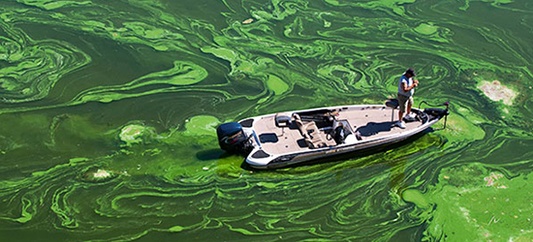
Controlling Blue-Green Algae Blooms
The first step in solving the problem was to collect data, so water samples were collected at the surface and at 10-feet down. The testing indicated that phosphorus levels were incredibly high. The lake was hypereutrophic, 99 ppb total phosphorus at the surface and 1,200 ppb 10 foot down.
It is uncommon to see phosphorus levels at 1,200 ppb in waterbodies managed for trophy fish and, in this case, some of the elevated results were related to the decaying organic matter that settled in deep water following the fish kill.
Based on all of the data collected, the lake was treated in phases to restore it back to its youthful self. Starting with an application of potassium permanganate, the organic matter in the deeper water was oxidized to help with the decomposition process. Next, alum was applied to the deeper water to settle any suspended matter to the bottom of the pond while also binding with some of the available phosphorus load. Following the alum application, a series of three Phoslock applications were made to the water column to mitigate the available phosphorus dissolved in the water column.
The next step will be to retest water quality and determine how the pond responded to the treatments. Additional data will drive future management decisions as we turn the hands of time backwards for this waterbody. Although the past will always be an uncomfortable reminder of a failed fishery, the owner can rest assured that his lake has a bright future ahead.
Keep Your Lake On Track with Water Quality Management
As lakes and ponds age, many will face elevated phosphorus levels. Although water quality can be both intimidating and confusing, there are some relatively simple solutions to this challenging issue. Starting with accurate water quality data is key. Using a reputable lab is a paramount to ensuring you have accurate data. If you do not know what the results mean, ask a professional, or use a water quality lab that is fluent in nutrient mitigation.
This leads to the question, have you noticed that your lake or pond is aging? Maybe it’s not algae growth, but instead is aquatic vegetation. Sometimes the clues are subtle, but if you know what to look for and you have water quality data to support your observations, you can then make the needed improvements well before they reach a tipping point.
SOLitude Lake Management is a nationwide environmental firm committed to providing sustainable solutions that improve water quality, enhance beauty and preserve natural resources.
SOLitude’s team of aquatic scientists specializes in the development and execution of customized lake, stormwater pond, wetland and fisheries management programs. Services include water quality testing and restoration, algae and aquatic weed control, installation and maintenance of fountains and aeration systems, shoreline erosion control, muck and sediment removal and invasive species management. SOLitude partners with homeowners associations, golf courses, private landowners, businesses and municipalities. SOLitude Lake Management is part of Rentokil, a leading business services company, operating across the United States, Canada and Puerto Rico.
For more information, visit SOLitude Lake Management at solitudelakemanagement.com, and connect on Facebook, LinkedIn and Twitter.








